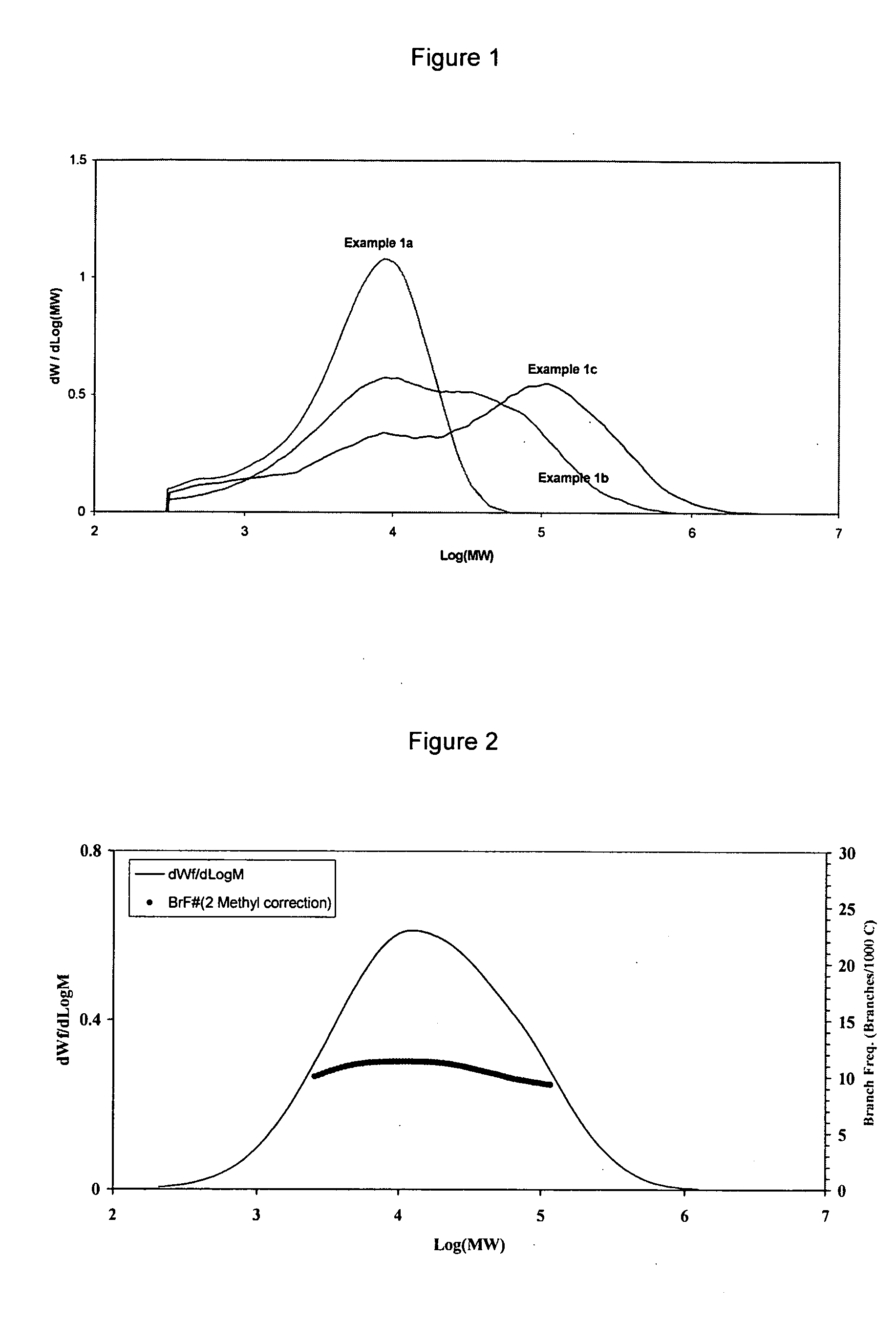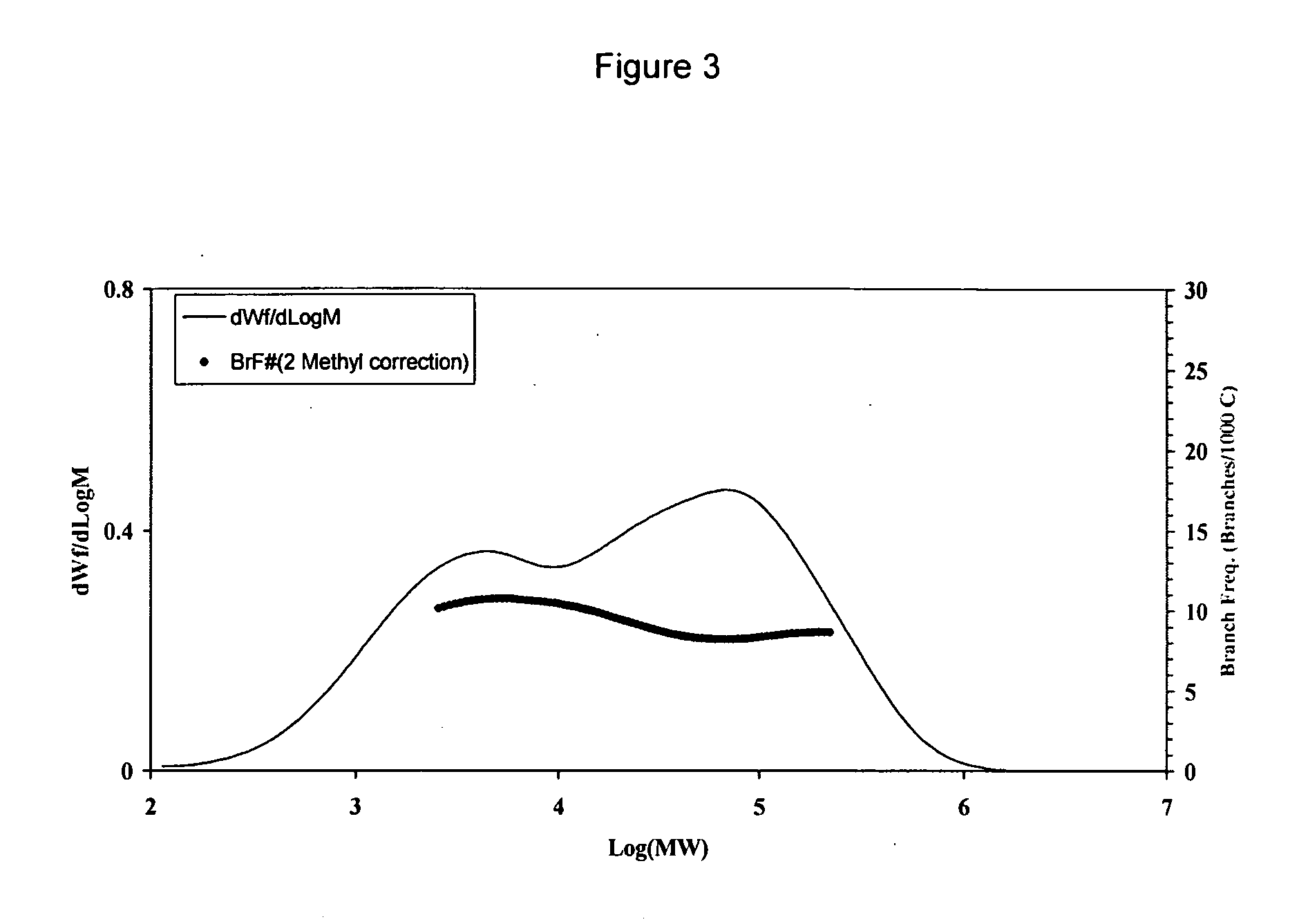Broad/bimodal resins with controlled comonomer distribution
a comonomer distribution and broad/bimodal technology, applied in the field of broad or bimodal molecular weight distribution process of olefin polymers, can solve the problems of patent failure to teach a catalyst comprising a phosphinimine or ketimide ligand
- Summary
- Abstract
- Description
- Claims
- Application Information
AI Technical Summary
Benefits of technology
Problems solved by technology
Method used
Image
Examples
example 1a
[0127] A 2 L stirred Parr reactor was heated at 100° C. for 1 hour and thoroughly purged with argon. The reactor was then cooled to 40° C. 910 mL of n-hexane, 30 mL of 1-hexene and 0.6 mL of a 25.5 weight % of triiso-butyl aluminum (TiBAL) in hexanes were added to the reactor. The reactor was then heated to 70° C. Hydrogen from a 150 mL cylinder was added to the reactor such that the pressure drop in the hydrogen cylinder was 30 psia. The reactor was then pressurized with 140 psig ethylene. Argon was used to push 26.2 mg of the supported catalyst prepared above from a tubing into the reactor to start the reaction. During the polymerization, the reactor pressure was maintained constant with 104 psig of ethylene. The polymerization was carried out for 10 minutes, yielding 25.2 g of polymer.
example 1b
[0128] The polymerization was the same as Example 1a, except that 27.7 mg of the supported catalyst was used and the polymerization was performed for 30 minutes, yielding 61.8 g of polymer.
example 1c
[0129] The polymerization was the same as Example 1a, except that 28.4 mg of the supported catalyst was used and the polymerization was performed for 60 minutes, yielding 108.4 g of polymer.
[0130] Table 1 and FIG. 1 present the molecular weights and GPC profiles, respectively, of resins produced in Example 1a˜1c. When the polymerization was only 10 minutes long (Example 1a), the consumption of hydrogen was low and hydrogen had not been depleted. As a result, a unimodal resin with low molecular weight and narrow MW distribution was produced. As the polymerization time was prolonged to 30 minutes (Example 1b), hydrogen started to become depleted in the reactor. Hence, a bimodal resin with broader MW distribution was produced, comprising a low MW fraction formed before hydrogen became depleted and a high MW fraction produced after hydrogen became depleted. When the polymerization was extended to 60 minutes (Example 1c), the period in which hydrogen became depleted became longer and he...
PUM
| Property | Measurement | Unit |
|---|---|---|
| Fraction | aaaaa | aaaaa |
| Percent by mass | aaaaa | aaaaa |
| Percent by mass | aaaaa | aaaaa |
Abstract
Description
Claims
Application Information
 Login to View More
Login to View More - R&D
- Intellectual Property
- Life Sciences
- Materials
- Tech Scout
- Unparalleled Data Quality
- Higher Quality Content
- 60% Fewer Hallucinations
Browse by: Latest US Patents, China's latest patents, Technical Efficacy Thesaurus, Application Domain, Technology Topic, Popular Technical Reports.
© 2025 PatSnap. All rights reserved.Legal|Privacy policy|Modern Slavery Act Transparency Statement|Sitemap|About US| Contact US: help@patsnap.com



